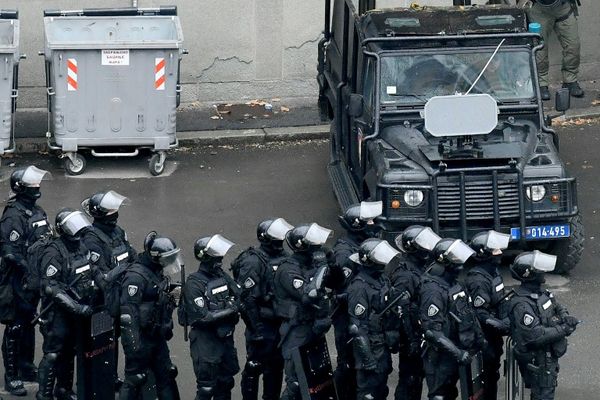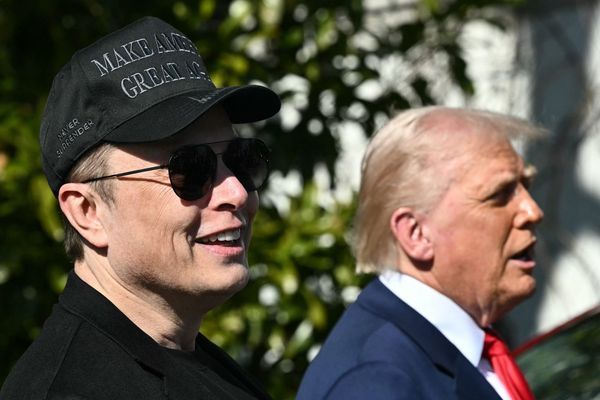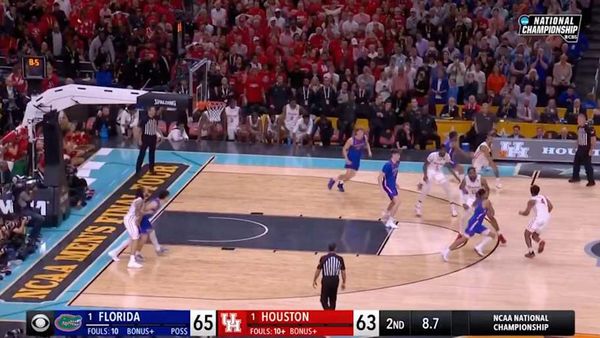DENVER — The remains of Native American ancestors showed up in boxes on the doorsteps of Colorado museums and at yard sales in Denver neighborhoods.
They sat for decades in metal sheds in the state’s national parks and in the bowels of prominent universities.
These human remains were excavated — looted — from the earth that protected them for centuries, in some cases so scientists could study their skulls to prove bogus, racist theories about the Indigenous peoples that lived here for millennia before Europeans displaced them from their ancestral homeland.
Thirty-three years ago, the U.S. Congress attempted to right some of the wrongs of the country’s genocide of American Indians by passing a law designed to give back to tribes these remains, these ancestors, who filled galleries at America’s top universities and museums.
But three decades after the passage of the Native American Grave Protection and Repatriation Act, more than half of those human remains have still not been handed back to tribes and descendants. A ProPublica investigation titled “The Repatriation Project” published last month found 10 institutions hold about half of the 110,000 Native American remains that have languished in collections from Massachusetts to California.
Colorado has been viewed as a national leader in complying with NAGPRA, as the 1990 law is known, with the Denver Museum of Nature & Science and the University of Colorado’s Museum of Natural History two of the first institutions in the country to repatriate their entire collections. Institutions in the state, including federal agencies with offices here, have made available 95.6% of the more than 5,000 Native American remains they had possessed — double the national rate.
But despite those successes, at least 230 Native American ancestors still sit in a handful of Colorado museums and university collections, a ProPublica database shows. All are deemed “culturally unidentifiable” — a designation that experts say has been commonly used to absolve institutions from taking action.
Meanwhile, more than 500 ancestral remains taken from Colorado still sit in collections across the country.
“It’s imperative that institutions that have that 0% (returned) ask themselves the critical questions: How do we see these ancestral remains or items in our possession?” said Theresa Pasqual, director of the Acoma Pueblo’s tribal historic preservation office in New Mexico. “Do we have an ethical and moral right to continue to hold onto these remains or are we ethically obligated to go beyond just sending out a simple letter… and do our due diligence to track down living descendent communities?”
Eugenics and grave robbers
ProPublica’s project sent shock waves through the museum and university world, prompting an avalanche of renewed attention on the progress of institutions across the country in conforming with the landmark 1990 law.
But for those working for years to comply with the act, it confirmed what they already knew: Some of America’s most prestigious institutions — like Harvard University, the University of California, Berkeley and the Field Museum in Chicago — are woefully behind on the 33-year-old legislation.
“It’s sort of a public secret that there are some institutions that have chosen to return only very small portions of their collections,” said Chip Colwell, a former curator at the Denver Museum of Nature & Science.
The law stemmed from a 1987 hearing held by the U.S. Select Committee on Indian Affairs. Smithsonian Secretary Robert McCormick Adams, in testimony on a bill that would repatriate Indian artifacts, indicated more than 50% of the institution’s 34,000 human remains were North American Indians or Alaska Natives.
“Tribal reaction to Secretary Adams’ testimony was swift,” a 1990 Senate report stated. In the following months, Native American tribes around the country called for the repatriation of their ancestors so they could be properly reburied.
The United States has a long, tortured history of desecrating Indigenous grave sites, dating back to colonial times. Thomas Jefferson once excavated a burial mound in Virginia without asking permission, doing so “in the name of science.”
American institutions, over the 19th and 20th centuries, accumulated hordes of Native American remains. The Smithsonian in the 1870s paid U.S. soldiers hefty sums for Indian clothing, weapons and tools to be sent back to Washington, ProPublica reported.
“We had these collections from well-known grave robbers that went throughout our country and dug everything up,” said Richard Smith, the historic preservation officer for the Pueblo of Laguna tribe in New Mexico.
Part of the fascination of early archeologists centered around the eugenics movement, which gained significant popularity in the United States from the late 19th century into the early 20th century. Eugenics — the racist idea of improving the quality of the human race by encouraging the reproduction of people with desirable traits — counted as prominent supporters Theodore Roosevelt, Alexander Graham Bell and John D. Rockefeller Jr., among others. The theory was taught in schools and celebrated in exhibits at the World’s Fair.
It also led institutions like the University of Denver to acquire Native American skulls to be studied. Eugenics was “definitely what our founder (Dr. Etienne B. Renaud) was interested in,” said Anne Amati, DU’s NAGPRA coordinator.
Renaud, like other scientists, collected looted craniums in an effort to prove a racist theory that Indigenous people were inferior to white people based on their skull sizes.
Federal records maintained by National Park Service, which oversees NAGPRA, show how DU and other Colorado institutions accumulated thousands of Native American remains from across the southwest.
DU’s Department of Anthropology used the remains of 17 individuals that had been removed from unknown locations as teaching aids in a professor’s “dig lab” in the 1980s, recreating an archaeology site in the Science Hall basement, the school wrote in a 2016 notice.
There were accidental findings by children in dry creek beds in Kiowa County; remains uncovered during highway construction of C-470 in Golden; and ancestral remains dug up and sold by amateur archaeologists at Mesa Verde.
The Colorado Bureau of Investigation in 2021 reported the remains of three Native American individuals had been removed from an unknown location more than 20 years prior.
“Museums accepted these people because they thought for a long time that natural history museums have a duty to curate and study everything in the natural world — including and especially Native Americans,” Colwell said.
But museums often didn’t keep — or never received — detailed records for the remains in their collections. Colwell recalled a curator in the 1970s who purchased a human foot at a yard sale in Denver. Unlabeled boxes might be left outside a museum’s doors.
“It’s always fascinating to me how many people out there have Native American human remains in their grandfather’s attic or something,” said Glenys Ong Echavarri, History Colorado’s former NAGPRA liaison and tribal consultation coordinator.
'A barrier to repatriation'
After the law’s passage in 1990, Congress envisioned that nearly all repatriations would be completed within five years.
It’s now been 33 years — and Colwell estimates we’re at least 70 years away from completion at the current pace. The Biden administration is now seeking regulatory changes to NAGPRA that would expedite repatriation proceedings and streamline the process for institutions.
Experts point to a lack of enforcement by the federal NAGPRA program, no firm deadlines on repatriations and a lack of resources among tribes and museums.
But many institutions have used a particular designation — “culturally unidentifiable” — to thwart attempts by tribes to reclaim their ancestors. These include remains in which “no lineal descendant or culturally affiliated Indian tribe or Native Hawaiian organization has been determined,” according to the law.
Some major repositories, including the Ohio History Connection and the University of Tennessee, Knoxville, categorized everything in their collection that might be subject to the law as “culturally unidentifiable,” ProPublica found.
“It is clear that has been a barrier to repatriation,” Melanie O’Brien, program manager for the National NAGPRA Program, told The Denver Post.
Since NAGPRA became law, 28 institutions located in Colorado reported Native American remains in their collections that were taken from across the country, according to ProPublica’s data. Of the 5,285 total remains that at one time were housed here, 5,055 have been made available for return to tribes — or 95.6%.
Twelve institutions in Colorado still have a total of 230 ancestral remains in their collection, including nine museums and universities that have not returned any back to tribes, according to ProPublica’s data.
All of these remains have been categorized as “not culturally affiliated.”
Trinidad State College, which has not returned all 62 ancestors in its possession, said its museum complied with the law in 1990 and in October mailed 106 letters to tribes with its inventory to once again begin consultation, the formal process of talking with tribes that is required under NAGPRA.
Officials are currently consulting with a host of tribes, the museum’s director said via email, and disputed that these ancestors have not been made available for return.
“Although the law was meant to correct a bad situation, it created hardships for small museums, like this one, and also the tribes,” said Loretta Martin, the museum’s director.
Members of Western Colorado University’s CT Hurst Museum said they’re in the same boat. The small collection in Gunnison, which has no paid staff, received 25 remains decades ago from a well-known looter near Durango, said Dr. David Hyde, the museum’s volunteer curator and collections manager. (The school disputes National Parks Service data, saying it has the remains of 40 Native Americans in all, not 67.)
The looter’s brother, after his death, asked Western Colorado if the school wanted the remains. The museum agreed, even though it had no anthropologist at the time. One of the skulls came to the museum from the university’s art department, Hyde said, where it may have been used for drawing classes.
After NAGPRA went into effect in the ’90s, the school sent out letters to every federally recognized tribe in the country. None responded, the curator said. Eventually, administrators got in contact with the Southern Ute tribe, which said it would accept the ancestors.
But due to a procedural error regarding consultations — a required step in the NAGPRA process — the agreement fell through, Hyde said. Three decades later, these ancestors are still with the museum.
Western Colorado has applied for a federal grant to help with consultation fees but Hyde acknowledged that, as a small museum with no paid staff, “we don’t have the opportunity or luxury of being proactive on a lot of stuff.”
Other more time-sensitive deadlines just kept moving NAGPRA further down the to-do list, even as Hyde has gone outside his job purview to try and get it done.
“We don’t have any kind of fire lit under us from federal action to revisit this in a timely manner,” he said. “After that failure in the ’90s, nothing really said you have to do it all over again.”
Tribes, meanwhile, say they’re inundated by requests from institutions around the country seeking consultations. These tribal historic preservation offices often only have a couple of staff to deal with myriad requests. Other pressing timelines — such as 30-day windows to respond to projects that might encroach on sacred land — take precedence.
“I feel on the fence about taking ownership when museums can’t even tell us where they’re from,” said Natividad Herrera, lieutenant governor of New Mexico’s Pueblo of Nambe.
It’s offensive, he said, when institutions mark up the bones of ancestors or tell the tribe that they have no documentation for their collection.
“I don’t feel comfortable laying them to rest here if they belong somewhere else,” Herrera said.
Many museums are eager to return Native American remains. But some tribes don’t have reburial traditions, complicating repatriation.
“When we put individuals to rest,” Smith, from the Pueblo of Laguna, said, “they’re never to be bothered or disturbed.”
The NAGPRA process, while vitally important, also dredges up difficult emotions for tribal members.
“When you lose someone, you go through a process of grieving,” Smith said. “We continue and move on with our lives, but all of sudden this brings us back. We’re now having to rebury someone and our ancestors were already buried years ago. It rekindles a feeling that’s not so good.”
Colorado leads the way
While some Colorado institutions have been unable to return Native American remains to tribes, the state overall has served as a leading example for NAGPRA compliance.
Colorado’s 95.6% rate for making remains available for return is roughly double the 48% national average.
O’Brien, of the National NAGPRA Program, said she points to Colorado in presentations when talking about institutions that have been successful in working with tribes — even those that have large numbers of ancestors with limited background information.
“Colorado in general has had a more proactive approach,” she said.
Institution leaders who have returned dozens — sometimes hundreds — of Native American ancestral remains to tribes echoed two phrases: proactivity and institutional will.
“The reality is tribes are often inundated with requests for consultation or lists of which places might have ancestors,” Colwell said. “Most don’t have the staff or don’t have the money to consult. So things can slow down or break down as a museum if you just send out the list and wait.”
When Colwell joined the Denver Museum of Nature & Science 2007, the institution was “seriously out of compliance,” he said, and faced public accusations that it wasn’t doing the right thing.
Within three years, the museum became a national NAGPRA leader. Federal data shows the museum has returned all 153 ancestors once part of its collection.
“We saw that we couldn’t have a future with tribal communities until we resolved past traumas the museum was complicit in,” Colwell said. “That was a big motivating factor — we felt we were the ones that had stolen items, we were the ones that had remains without permission. It was our responsibility to be proactive to address historical problems.”
Cooperation and strong leadership from Colorado’s two tribes — the Ute Mountain Utes and Southern Utes — also played important roles.
The state and tribes came up with a landmark agreement in 2007 that was designed to address the “culturally unidentified” issue that had stymied repatriation progress in Colorado and around the country.
The deal created a process for consultation, transfer and reburial of more than 400 culturally unidentifiable Native American human remains and associated funerary objects that came from inadvertent discoveries on state and private lands.
“No matter whose relative they are, we know they’re Indigenous,” said Ernest House Jr., a member of the Ute Mountain Ute tribe and former head of the Colorado Commission of Indian Affairs, who spearheaded these negotiations. “We may not know if they’re Cheyenne or Ute, but we know they’re native and they belong back into the ground.”
Six years later, the state and tribes signed a memorandum of understanding to address reburials.
“The model in Colorado is really something other states can look at,” said Manuel Heart, chairman of the Ute Mountain Ute tribe.
As the federal government seeks input on its proposed rule changes to NAGPRA, Colorado institutions urged leaders to build on the progress made in the Centennial State.
“Repatriation under NAGPRA has been too slow and the burdens placed on tribes too great,” Stephen E. Nash, director of anthropology at the Denver Museum of Nature & Science, wrote in a public comment on the proposed rule revision. “NAGPRA is, ultimately, human rights legislation.”
———







